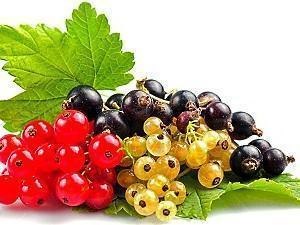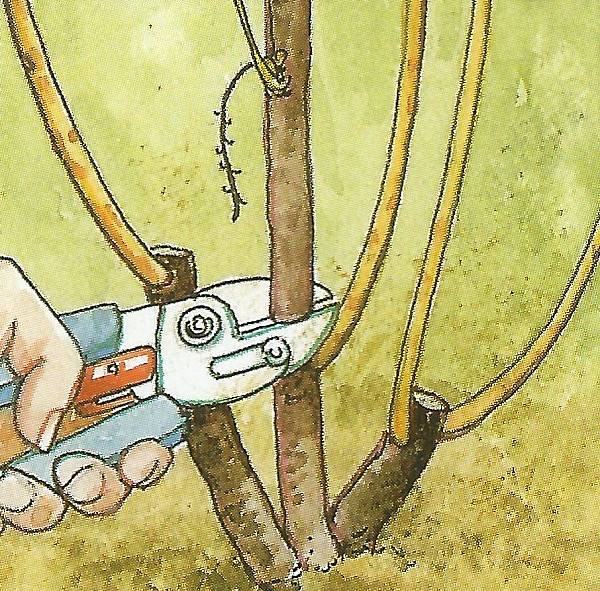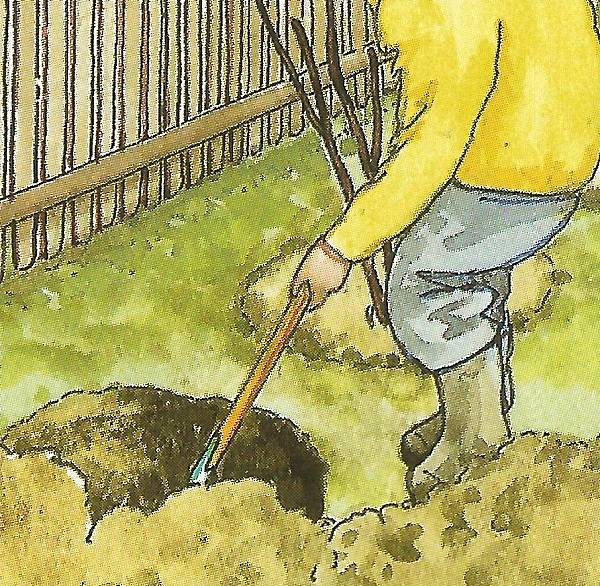Currant - care after harvest in the autumn
 In every garden there is a place for currants, which give a rich harvest of delicious berries. This is one of the most valuable crops. Currant berries contain a large amount of vitamin C, calcium and iron.
In every garden there is a place for currants, which give a rich harvest of delicious berries. This is one of the most valuable crops. Currant berries contain a large amount of vitamin C, calcium and iron.
There are three types of currants: red, black and golden. There are early, middle and late varieties of currants, differing in the size and color of the berries.
Among the common varieties of black currant, you can find "Ojebin", "Lama", "September Daniela", "Black Pearl", from the varieties of red currants - "Heros", "Jonker van Tets", "Holland red", "Rote Shpetlese", "Rondom", from varieties of golden currant - "Versailles white", "Venus".
No less useful and interesting is a hybrid of black currant and gooseberry - yoshta.
In order to get a high yield of any variety of currants every year, you need to learn how to properly care for the planted bushes.
Currant care after harvest
The most important period for caring for currant shrubs is the time after fruiting, when the crop is harvested, and the bush is fully ready to give its strength to the shoots, root system and foliage. This time falls on the end of August, the beginning of September, depending on the variety of currants.
If the bush managed to form a lot of shoots, then they need to be cut off, leaving the strongest in an amount of three to four pieces or from eight to ten. This will in no way harm the bush, but will create a condition for strengthening the remaining shoots into strong branches, on which clusters with decent sized berries will appear in a year. Dried and old branches are also removed.

Currant care in autumn
Red and black currant bushes are very fond of humid and nutrient-rich moist soil. It is in the autumn at the beginning of October that the earth around the currant bushes is dug up and fertilized with organic, mineral - phosphoric, potassium mixtures in the following proportions: one hundred grams of superphosphate - forty grams of potassium chloride - twelve kilograms of organic matter. Fertilized bushes overwinter well in autumn and in summer they bring the highest yields.
Caring for black currant in autumn involves its reproduction by lignified seedlings.
Currant cuttings are best taken in places open to sunlight, which are thoroughly protected from wind drafts.
Stages of planting black currant:
- the first action when planting a seedling in the middle of autumn is digging a hole 50 * 50 cm in size and about 40 cm deep; the bottom of the pit is loosened with a digging fork;

- after the planting pit is ready, you should mix the compost with mineral fertilizers, mix the resulting mixture well with the soil dug from the pit (1: 1 ratio);

- the seedling sits in the hole in such a way that the root system is below the horizontal level applicable for the propagation of currants; the root system of the seedling is pruned, dry roots are removed, only the healthiest ones remain;

- after measuring the correct planting height of the seedling, the pit is filled with a prepared mixture of earth and compost; the root system of the seedling should be moistened in a clay solution - this is the main protection of the roots from wilting and drying out;

- on previously planted bushes, which have already given the first fruits, a lot of young shoots are formed that can be useful for reproduction, in the fall it is just enough to dig one of them into the ground, it will take root and in spring it will be possible to separate a new seedling from the main bush.

Caring for red currants is identical to caring for black.
In order to preserve the root system of any kind of currant, it is worth digging up all the bushes with earth until late autumn, and when it snows, spud them in order to create a certain fur coat, such actions will save the roots from sudden changes in temperature and severe frosts.
The main features of autumn care for varieties of red and black currants:
- unpretentious currant bushes are very fond of moisture and warm areas with abundant sunlight, therefore, when planting seedlings in autumn, one should evaluate what climatic properties the planting site has in the spring-summer period;
- planting single-varietal bushes in one area is inappropriate, many biologists have proven that large yields are obtained when several varieties of currant bushes grow on a site, high and high-quality yield is ensured by additional pollination of currant inflorescences of other varieties;
- when planting, it should be borne in mind that currant seedlings planted in the fall do well in loose, loamy and sandy soils that have a neutral or low acidity; and you should also pay attention to the frequency of planting seedlings, their too close location can create a shadow, which will lead to a decrease in yield;
- bushes that are more than ten years old gradually lose their ability to bear fruit and bring high yields, therefore, in the fall, the young shoots formed are buried in order to form young seedlings, and in the spring the old bush is removed, and the planted established shoot develops into a young bush, thus, the garden is renewed new bushes;
- in the fall, attention is paid to the prevention of the development of fungal diseases and harmful insects that can infect the foliage of currant bushes and thereby reduce the yield of berries; to prevent their development and reproduction, all dry foliage that has flown from the bushes is burned, it is in it that the larvae of harmful insects can live, and also if diseases on the foliage have been noticed, the soil can retain pathogens and infect the bush that has blossomed in spring again with an unwanted ailment.
Compliance with the elementary rules of autumn care for currant bushes - fertilization, pruning and planting - allows, as a result of painstaking work, to get the highest yields of various varieties of the most delicious and healthy berries.